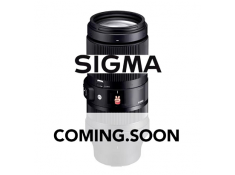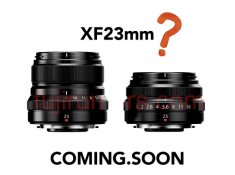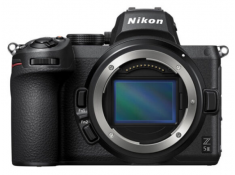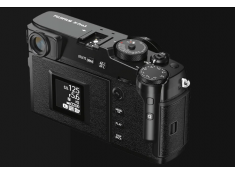The Ultimate Guide:4 Best 35mm Film Cameras 2024
Thursday 25 April 2024
 5.3k
5.3k
 Reproduction without the author's authorization is prohibited
Reproduction without the author's authorization is prohibited
You’ve seen so many recommendations for film cameras, so I’m going to recommend some ultimate answers and why I recommend these four Film Cameras.
Recommended standards
It must be admitted that no one will buy a film camera in 2024 for reasons such as photo quality and simple operation. When I buy Film Cameras in 2024, I want to pursue a retro vibe and upload them to ig or TikTok. Now that the needs are clear, recommendations become simple. The Film Cameras you need need to meet the following points:
1.Mechanical/manual
Film cameras themselves have also gone through a long period of development. Film cameras in the 1990s already had many very modern functions, such as autofocus, automatic film loading, etc. Although these functions are very practical, it is the mechanical structure and manual that have the most retro vibe, and generally speaking, the manual film camera will look more beautiful.
2. Interchangeable lenses
There are many point-and-shoot film cameras with fixed lenses on the second-hand market, and their prices are surprisingly cheap, probably less than $100 USD. But this type of point-and-shoot film camera is usually a wide-angle lens. This will greatly limit your creativity. Film cameras with interchangeable lenses allow you to create works on more subjects. And after all,Interchangeable lenses look much cooler.
3. Stable second-hand prices
If you pay attention to film cameras long enough, you will find that the prices of cameras such as Contax and Rollei have increased rapidly in recent years, while the prices of other film cameras have shown signs of falling. You should avoid buying cameras that have skyrocketed in price to cater to online influencers, and instead buy a classic, stable-priced film camera.
4. Good Looking
Film photography is a very cumbersome thing. Nowadays, everyone has a smartphone, which lowers the threshold for photography and causes people to lose patience. Fixed iso, no high-speed continuous shooting, and of course no wifi transmission. So you need a good-looking film camera to give you enough motivation to keep your passion for film photography.
The 4 Best 35mm Film Cameras 2024 recommended below all meet the characteristics of Mechanical/manual; Interchangeable lenses; Stable second-hand prices and good looking. You can buy with confidence.
4 Best 35mm Film Cameras 2024

Nikon F2
The Nikon F2 is a legendary 35mm film SLR camera that was introduced in 1971 as the successor to the highly successful Nikon F. It quickly became a favorite among professional photographers due to its robust build quality, versatility, and reliability in various shooting conditions.
One of the standout features of the Nikon F2 is its rugged construction, featuring a durable metal body that can withstand heavy use in demanding environments. It also introduced several advancements over its predecessor, such as a more accurate through-the-lens (TTL) metering system and improved compatibility with a wide range of Nikon F-mount lenses.
Photographers appreciated the F2's modular design, which allowed for interchangeable focusing screens, viewfinders, and motor drives, catering to different shooting preferences and needs. Its mechanical shutter offered a wide range of speeds from 1 to 1/2000 seconds, along with a bulb mode for long exposures.
The Nikon F2 remained in production for over a decade, demonstrating its enduring appeal and reliability. Even today, it is sought after by film enthusiasts and collectors for its historical significance and excellent performance in analog photography.

Olympus om1
The Olympus OM-1, introduced in 1972, is a classic 35mm film SLR camera that gained widespread acclaim for its compact size, innovative design, and exceptional optical performance. It was part of Olympus's OM series, known for their small and lightweight bodies compared to other SLRs of the time.
One of the OM-1's key features was its compact and lightweight magnesium alloy body, which made it highly portable and ideal for photographers seeking a more mobile shooting experience without compromising on image quality. Despite its small size, the OM-1 offered advanced features that appealed to both amateur and professional photographers.
The OM-1 featured a precise and reliable through-the-lens (TTL) light metering system, allowing photographers to accurately measure light for proper exposure. Its match-needle metering display in the viewfinder provided intuitive feedback for adjusting exposure settings such as aperture and shutter speed.
Photographers appreciated the OM-1's compatibility with a wide range of high-quality Zuiko lenses, known for their excellent optical performance and sharpness. This versatility made the OM-1 a popular choice for various photography genres, including landscape, portrait, and street photography.
In addition to its technical capabilities, the OM-1 gained recognition for its stylish and ergonomic design, featuring intuitive controls and a comfortable grip for extended shooting sessions. Its reliable mechanical shutter offered speeds from 1 to 1/1000 seconds, along with a bulb mode for long exposures.
The Olympus OM-1's combination of portability, advanced features, and optical excellence cemented its status as a beloved classic among film photographers and collectors alike, with many enthusiasts still using and appreciating its capabilities in the realm of analog photography.

Canon AE1
The Canon AE-1, introduced in 1976, is a legendary 35mm film SLR camera that played a pivotal role in bringing advanced photography features to a wider audience of enthusiasts and amateur photographers. Its innovative design, ease of use, and affordability made it immensely popular and a bestseller during its production run.
One of the standout features of the Canon AE-1 was its adoption of automatic exposure (AE) technology, making it one of the first SLR cameras to offer fully automatic exposure control. This feature, coupled with its semi-automatic and manual exposure modes, provided photographers with a range of options to suit different shooting scenarios and preferences.
The AE-1's automatic exposure system relied on a sophisticated through-the-lens (TTL) center-weighted metering system, which measured light accurately for precise exposure settings. This technology simplified the process of capturing well-exposed images, particularly for photographers transitioning from fully manual cameras.
Another notable aspect of the AE-1 was its compatibility with Canon's extensive FD lens mount system, offering a wide range of high-quality lenses to suit various photographic needs, from wide-angle to telephoto and specialty lenses.
In addition to its advanced features, the Canon AE-1 gained praise for its user-friendly design, featuring intuitive controls, a clear and bright viewfinder, and a lightweight yet durable construction. These qualities made it accessible to photographers of all skill levels, from beginners learning the basics of photography to more experienced users exploring creative possibilities.
The enduring popularity of the Canon AE-1 is a testament to its impact on the photography industry and its lasting appeal among film enthusiasts and collectors. Many photographers still value and use the AE-1 today, appreciating its reliability, versatility, and contribution to making photography more accessible and enjoyable.

Leica M6
The Leica M6 is a classic 35mm rangefinder camera that has achieved legendary status among photographers for its exceptional build quality, precision engineering, and timeless design. Introduced by Leica in 1984, the M6 quickly became a favorite among professional and serious amateur photographers alike.
One of the defining characteristics of the Leica M6 is its manual focus rangefinder system, which provides photographers with a unique and immersive shooting experience. The rangefinder mechanism allows for precise manual focusing, making it well-suited for capturing candid moments, street photography, and scenes that require quick and accurate focusing.
The M6 features a robust, all-metal construction that exudes durability and craftsmanship. Its compact and lightweight body, combined with its discreet appearance, makes it a versatile tool for photographers who value portability and unobtrusiveness in their work.
Photographers appreciate the M6's bright and clear viewfinder, which aids in accurate composition and focusing. The camera's TTL (through-the-lens) light metering system provides reliable exposure readings, allowing photographers to achieve proper exposure in a variety of lighting conditions.
One of the significant improvements introduced with the Leica M6 was its built-in light metering system, which eliminated the need for an external light meter often required with previous Leica models. This integration enhanced the camera's usability and convenience for photographers working in fast-paced or dynamic shooting environments.
The Leica M6 remains highly sought after by photography enthusiasts and professionals for its exceptional optical performance, mechanical precision, and timeless design. Its compatibility with Leica's renowned M-mount lenses further expands its capabilities, offering a wide range of focal lengths and optical characteristics to suit different photographic styles and preferences. Despite advancements in digital photography, the Leica M6 continues to hold a special place in the hearts of photographers who appreciate its unique blend of tradition, craftsmanship, and photographic excellence.
What is the difference Between Film Cameras Photography and DSLR/Mirrorless Photography?
Film cameras and digital cameras (DSLRs and mirrorless cameras) offer distinct approaches to photography, each with its advantages and characteristics. Here are some key differences between the two:
Medium:
Film Cameras: Use photographic film to capture images. Film comes in various types, such as black and white, color negative, and slide/transparency film, each with its unique characteristics in terms of grain, color rendition, and contrast.
DSLR/Mirrorless Cameras: Capture images digitally using an image sensor. Images are stored electronically on memory cards in formats such as JPEG or RAW, allowing for immediate viewing, editing, and sharing.
Image Preview and Feedback:
Film Cameras: Do not offer instant image preview unless using instant film (e.g., Polaroid). Photographers must wait until the film is developed to see the results, which can create anticipation and surprise.
DSLR/Mirrorless Cameras: Provide instant image preview on the camera's LCD screen or electronic viewfinder (EVF). Photographers can review images immediately after capture, check exposure, focus, and composition, allowing for quick adjustments if needed.
Workflow:
Film Cameras: Require film loading, shooting, and then processing (either in a darkroom or by a lab) to produce physical prints or scanned digital images. Film photographers often engage in manual processes like developing and printing, which can be time-consuming but rewarding.
DSLR/Mirrorless Cameras: Offer a digital workflow with instant access to captured images. Images can be transferred to a computer or mobile device for editing, printing, and sharing digitally. Post-processing software allows for extensive editing possibilities and creative control.
Cost:
Film Cameras: Involve ongoing costs for purchasing film rolls, processing chemicals (if developing at home), and printing/scanning services. High-quality film and processing can be expensive over time.
DSLR/Mirrorless Cameras: Initial investment in the camera body and lenses can be high, but there are no ongoing costs for film or processing. Memory cards are reusable, and digital images can be stored indefinitely without degradation.
Shooting Experience:
Film Cameras: Require careful consideration of exposure settings since each frame is precious. Limited exposures per roll encourage thoughtful composition and planning.
DSLR/Mirrorless Cameras: Offer more flexibility with virtually unlimited exposures (limited by memory card capacity). Real-time feedback on exposure settings allows for quick adjustments and experimentation.
Resolution and Image Quality:
Film Cameras: Depending on film type and format, film can offer high resolution and excellent image quality, capturing fine details and nuances.
DSLR/Mirrorless Cameras: Modern digital cameras provide high-resolution images with low noise levels, especially in controlled lighting conditions. RAW files offer extensive editing latitude without compromising image quality.
Lens
These four Best 35mm Film Cameras are all cameras with interchangeable lenses. However, the lenses of these 35mm Film Cameras of the same era will have many problems due to their age, such as mildew, dust, zoom ring failure, etc. Luckily you can adapt your modern lenses to these classic 35mm Film Cameras via adapters. We provide Nikon F Mount Body adapter; L-Mount Alliance (Leica) adapter and other models of lens adapter. K&F CONCEPT delivers around 300 types of lens adapter rings, making different sizes of lenses and cameras smoothly compatible. With a professional design and craftsmanship, our lens adapter rings allow professionals to renew old lenses. Staying connected to all your powerful tools has never been this easy.
Conclusion
The four film cameras mentioned above are all very classic models, models approved by famous photographers after long-term testing. Prices have also been very stable, and if you're a film shooter, you'll love these four Best 35mm Film Cameras.
Statement: all contents and remarks made by K&F CONCEPT 's intranet friends only represent themselves and do not reflect any K&F CONCEPT 's opinions and views.
-
 Sigma may release a new l mount zoom lensTuesday 01 April 2025
Sigma may release a new l mount zoom lensTuesday 01 April 2025 -
 Fujifilm may launch a new XF23mm pancake lensFriday 28 March 2025
Fujifilm may launch a new XF23mm pancake lensFriday 28 March 2025 -
 Nikon Z5ii will be released on April 3Friday 28 March 2025
Nikon Z5ii will be released on April 3Friday 28 March 2025 -
 Nikon Z5ii will be officially released next weekWednesday 26 March 2025
Nikon Z5ii will be officially released next weekWednesday 26 March 2025 -
 Fujifilm plans to continue to promote X-Pro and X-E series productsTuesday 25 March 2025
Fujifilm plans to continue to promote X-Pro and X-E series productsTuesday 25 March 2025





